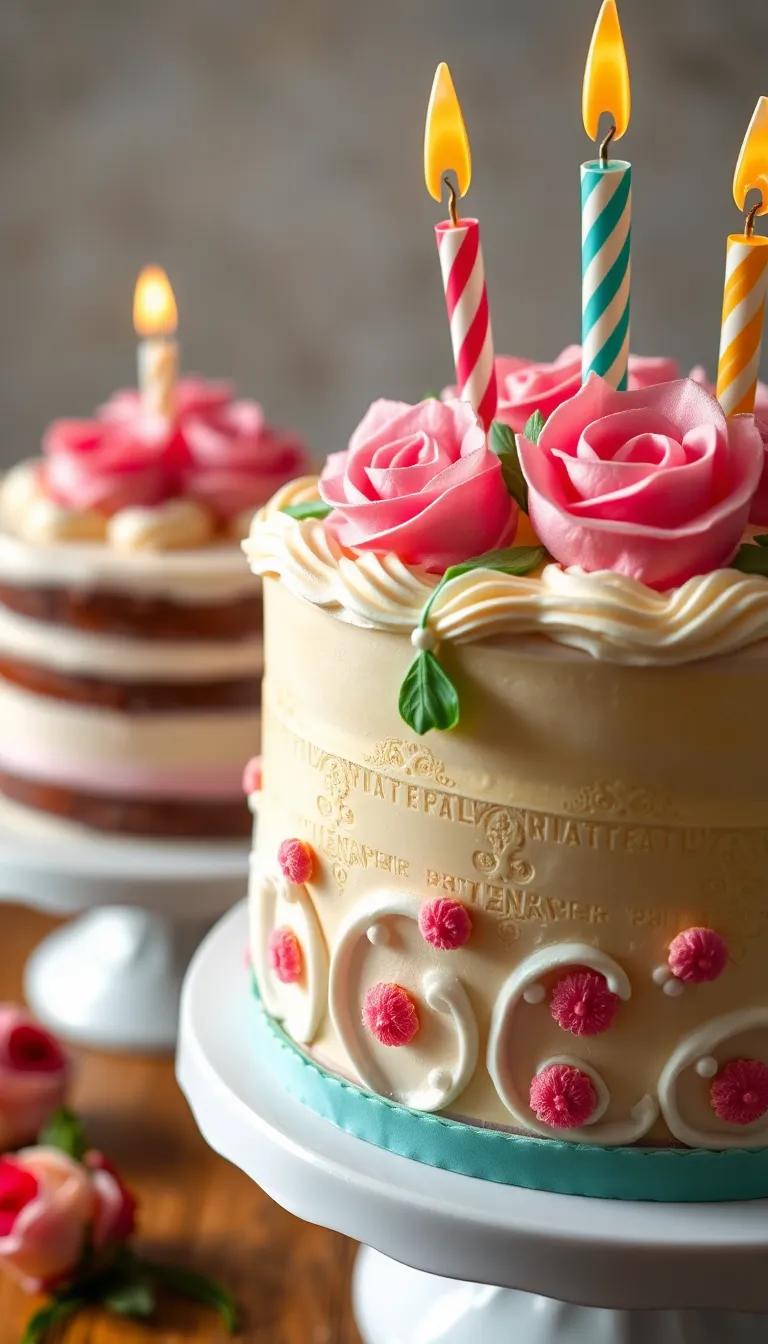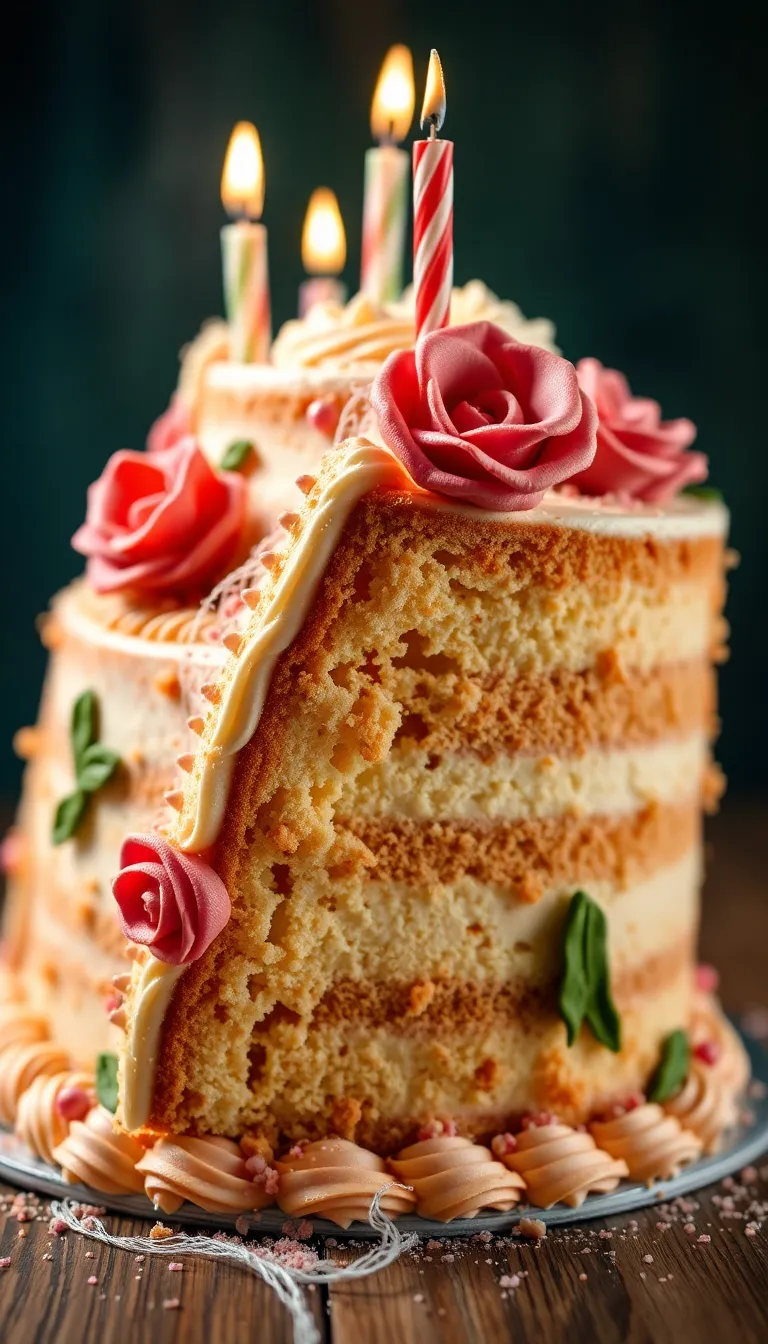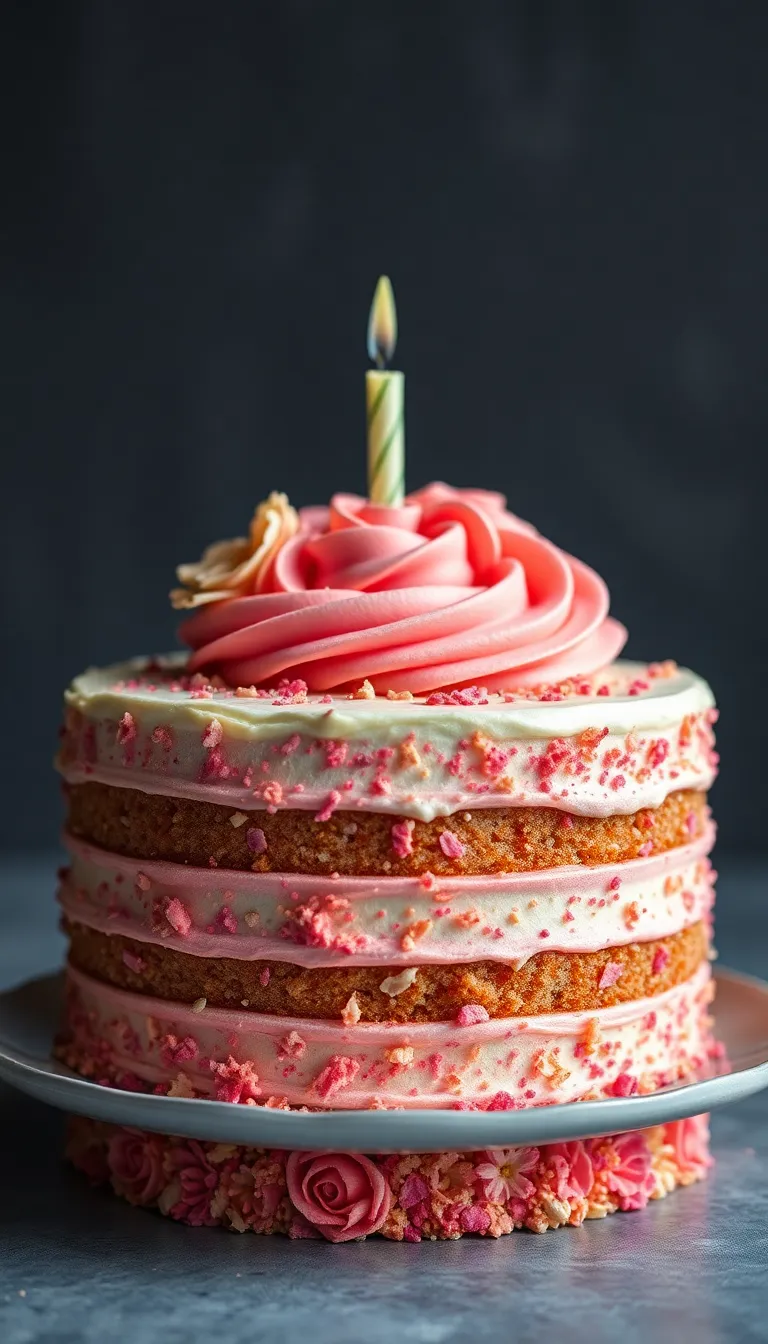Birthday cakes aren’t just dessert—they’re edible art, nostalgia bombs, and Instagram bait rolled into one. Remember that wobbly, frosting-smeared cake your grandma made? Or the over-the-top unicorn cake your niece demanded last year?
Whether you’re chasing vintage charm or viral creativity, nailing the perfect cake is a power move. And no, store-bought won’t cut it. Let’s make something legendary.
Why This Recipe Slaps

This isn’t just another cake recipe—it’s a flexible, foolproof base for both vintage and modern designs.
The crumb is tender but sturdy, the flavor rich but not cloying, and the texture? Perfect for stacking, carving, or drowning in sprinkles. Plus, it’s a blank canvas.
Want a 1970s-style buttercream rose cake? Go for it. Need a gravity-defying geode cake?
Easy. This recipe handles it all without crumbling like your last diet attempt.
Ingredients You’ll Need
- 2 ½ cups all-purpose flour (spooned & leveled, unless you enjoy dense hockey pucks)
- 2 ½ tsp baking powder (fresh, not the stuff from the Reagan era)
- ½ tsp salt (because life’s bland enough already)
- 1 cup unsalted butter, softened (margarine is a crime here)
- 2 cups granulated sugar (yes, it’s a lot. It’s a birthday cake.)
- 4 large eggs, room temp (cold eggs = sad, lumpy batter)
- 1 tbsp vanilla extract (imitation vanilla is for heathens)
- 1 cup whole milk (skim milk makes for a sad, dry cake)
Step-by-Step Instructions

- Prep like a pro: Preheat oven to 350°F (175°C).
Grease and line your pans—parchment paper is your friend.
- Dry team unite: Whisk flour, baking powder, and salt in a bowl. Set aside. Try not to inhale the flour cloud.
- Cream the dream: Beat butter and sugar until fluffy (≈3 mins).
Add eggs one at a time, then vanilla. Scrape the bowl unless you enjoy uneven mixing.
- Alternate attacks: Add dry mix and milk in 3 parts, starting and ending with dry. Mix until just combined—overmixing = tough cake.
- Bake it ’til you make it: Divide batter into pans.
Bake 25-30 mins or until a toothpick comes out clean. No jiggly centers.
- Cool it: Let cakes cool in pans for 10 mins, then transfer to a rack. Frosting a warm cake?
Enjoy your sloppy mess.
Storage Instructions
Unfrosted cakes can be wrapped in plastic and stored at room temp for 2 days or frozen for 3 months. Frosted cakes last 3 days in the fridge (bring to room temp before serving—cold buttercream tastes like regret). For longer storage, freeze slices wrapped in foil. Pro tip: Label them unless you enjoy mystery cake roulette.
Why This Recipe Wins

- Versatility: Works for layered cakes, sheet cakes, or sculpted masterpieces.
- Sturdy yet tender: Holds up to fondant but melts in your mouth.
- Crowd-pleaser: Not too sweet, not too plain—just right.
- Time-tested: No weird ingredients or finicky steps.
Even your chaotic cousin could nail this.
Common Mistakes to Avoid
- Overmixing: Gluten development = tough cake. Mix until just combined.
- Cold ingredients: Room temp eggs and butter mix better. Plan ahead.
- Underbaking: A gooey center isn’t “fudgy”—it’s raw.
Use a toothpick.
- Frosting too soon: Warm cake + frosting = slidey disaster. Patience.
Alternatives & Swaps

Gluten-free: Swap flour for a 1:1 GF blend (add ½ tsp xanthan gum if needed). Dairy-free: Use plant-based butter and milk. Flavor twists: Replace ½ cup flour with cocoa powder for chocolate, or add citrus zest for brightness. For vegan, use flax eggs and dairy subs—but IMO, it’s not quite the same.
FAQs
Can I make this cake ahead of time?
Absolutely.
Bake, cool, wrap tightly, and freeze for up to 3 months. Thaw overnight before decorating. Frosting day-of is best for freshness.
Why did my cake sink in the middle?
Overmixing, underbaking, or opening the oven too early.
Also, check your baking powder—expired leaveners are tragic.
Can I use cake flour instead?
Sure, for a lighter crumb. Use 2 ¾ cups cake flour and reduce baking powder to 2 tsp. But all-purpose works great for most designs.
How do I get super smooth frosting?
Crumb coat first (thin layer), chill for 20 mins, then apply final frosting.
Use a bench scraper dipped in hot water for pro-level smoothness.
What’s the best frosting for vintage designs?
American buttercream (easy) or Swiss meringue buttercream (smoother). For those ’70s roses, you’ll need stiff buttercream and a petal tip.
Final Thoughts
Birthday cakes should be fun, not stressful. This recipe gives you the foundation to go vintage, modern, or downright absurd.
Whether you’re piping rosettes like it’s 1985 or crafting a drip cake that breaks the internet, remember: perfection is overrated. A lopsided cake with love beats a flawless one with no soul. Now go bake something unforgettable—and tag us when it goes viral.
